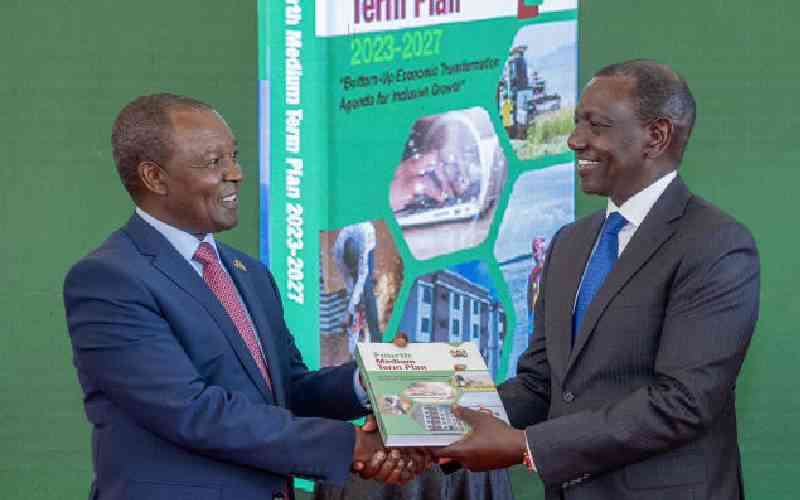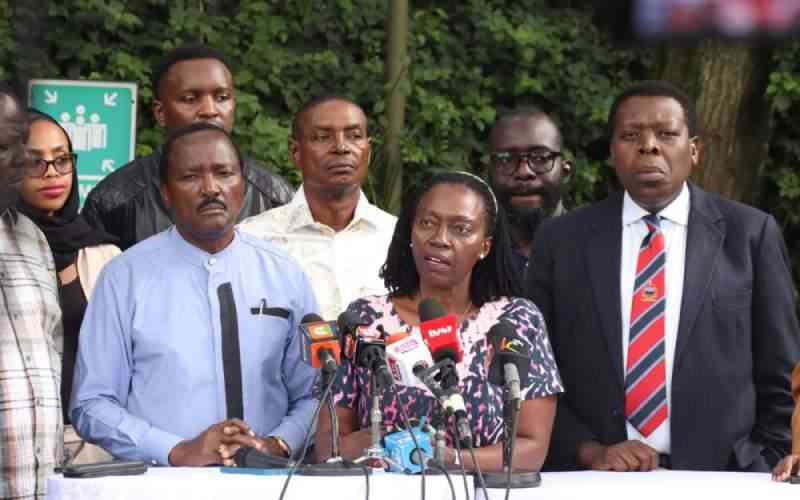NAIROBI: The Vision 2030 development blueprint envisages improved livelihoods for all Kenyans through sustained economic growth. The Government is implementing an enabling environment for attainment of these development objectives.
In the transport sector, we are aware that the improved economic situation is reflected in a rapidly increasing vehicle population. This will facilitate timely movement of people and goods.
To ensure the national road network fulfills its role in meeting this demand, four broad approaches are being applied.
Firstly, we have embarked on a routine maintenance of existing roads. Under this approach, maintenance measures are applied to maximise the service life of existing roads.
Secondly, we are rehabilitating existing roads whose pavements have depleted their service life and those that require significant strengthening are reconstructed or receive periodic maintenance measures such as bituminous overlays.
Thirdly, we are upgrading roads to bitumen standard. Under this approach, unpaved roads are upgraded to bitumen standard so as to connect rural market centres and social amenities to the national trunk road network. The ongoing Low Volume Sealed Roads initiative under which an initial 4,000km of roads will be upgraded to bitumen standard falls in this category. An additional 800km of trunk roads conveying higher traffic volumes, are also being upgraded.
Fourthly, we are implementing capacity enhancement of highly trafficked roads. Under this approach, measures are undertaken to manage increased traffic and ease congestion.
While the Government is simultaneously implementing all of the above approaches, the capacity enhancement of highly trafficked roads is receiving particular emphasis.
A given transport link, such as a road section, has a certain maximum capacity to convey people and goods. This maximum capacity in turn depends on the configuration and features of the link in question as well as the nature of traffic that it conveys.
When the volume of traffic using a given road begins to approach the maximum capacity, the level of service experienced by users is reduced and in the event that capacity is exceeded, traffic congestion occurs.
To increase the traffic carrying capacity of those roads and related facilities which are at risk of exceeding their design volume, the Government is implementing various initiatives. These initiatives comprise various technical interventions and options such as providing grade separated junctions (flyovers) at busy junctions, increasing the number of lanes or carriageways and provision of service roads, including facilities for non-motorised traffic and reconstructing pavements so as to provide wider and safer cross sections and/or improved vertical and horizontal alignments.
This also involves the introduction of improved facilities for axle load control and border crossing formalities
The above technical interventions may be applied singly or in combination at a given location depending on needs.
The Government is also aware that capacity enhancement of several other highways and road corridors is necessary and is preparing to apply some of the aforementioned technical options.
These highways include capacity enhancement of the Mariakani–Machakos turnoff corridor, capacity enhancement of the Rironi–Nakuru–Mau Summit corridor, capacity enhancement of Kenol–Muranga–Sagana–Marua–Nanyuki–Isiolo–Moyale corridor and capacity enhancement of Kenol–Makutano–Mwea–Embu–Meru–Isiolo corridor as well as the construction of Mombasa Northern by-pass.
Complementary initiatives which will also mitigate traffic congestion on roads include provision of the Standard Gauge Railway to improve movement of heavy cargo on the Northern Corridor and introduction of mass rapid transit systems in urban areas.
The various congestion-alleviation initiatives are in harmony with each other and are regionally balanced.
Among the initiatives being pursued is the capacity enhancement by way of two corridors; that is Kenol–Muranga-Sagana–Marua–Nanyuki–Isiolo–Moyale corridor, and the Kenol–Makutano–Mwea–Embu–Meru-Isiolo corridor as stated by President Uhuru Kenyatta during his recent Central Kenya tour.
Stay informed. Subscribe to our newsletter
As the Ministry endeavours to implement the above with all due speed and diligence, including making the required technical, financing and procurement arrangements, we request and look forward to the cooperation and patience of the public at large and road users in particular.
The writer is Transport and Infrastructure Cabinet Secretary
 The Standard Group Plc is a
multi-media organization with investments in media platforms spanning newspaper
print operations, television, radio broadcasting, digital and online services. The
Standard Group is recognized as a leading multi-media house in Kenya with a key
influence in matters of national and international interest.
The Standard Group Plc is a
multi-media organization with investments in media platforms spanning newspaper
print operations, television, radio broadcasting, digital and online services. The
Standard Group is recognized as a leading multi-media house in Kenya with a key
influence in matters of national and international interest.
 The Standard Group Plc is a
multi-media organization with investments in media platforms spanning newspaper
print operations, television, radio broadcasting, digital and online services. The
Standard Group is recognized as a leading multi-media house in Kenya with a key
influence in matters of national and international interest.
The Standard Group Plc is a
multi-media organization with investments in media platforms spanning newspaper
print operations, television, radio broadcasting, digital and online services. The
Standard Group is recognized as a leading multi-media house in Kenya with a key
influence in matters of national and international interest.








